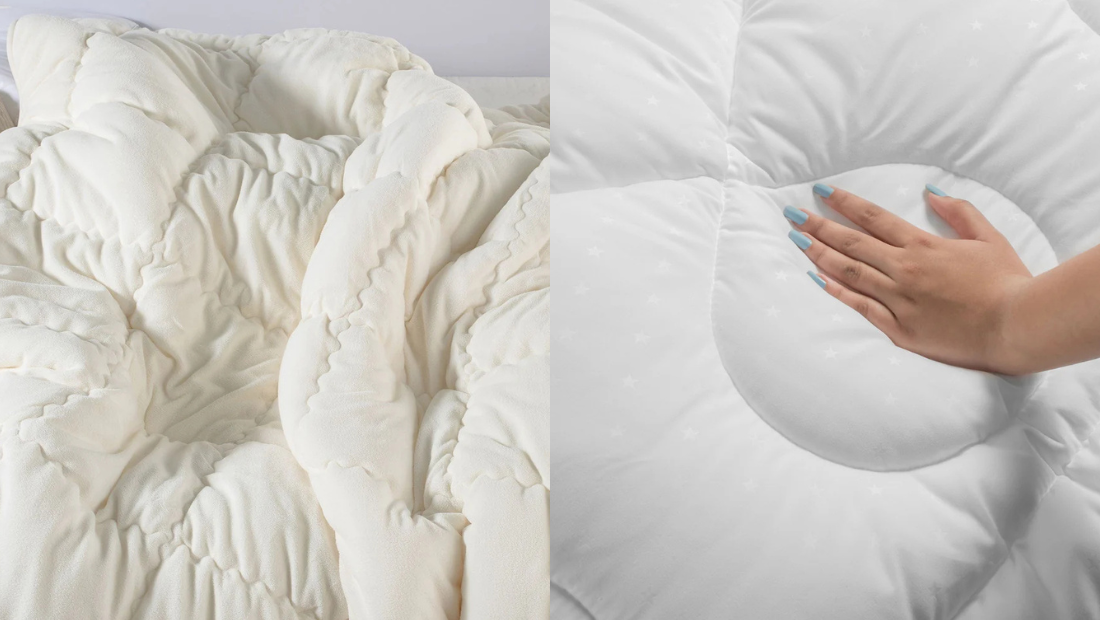As temperatures drop in winter, folks search for ways to keep warm. Winter quilts and blankets are two common choices to stay snug during the cold season. Both aim to provide warmth Premium Quilts, but they function. To help you pick the right one for your winter needs, let's check out the differences between winter quilts and blankets by comparing how they keep you warm, how comfy they are, and how useful they are.
Understanding Winter Quilts
Winter quilts do more than prettify your bed. Their design aims to keep you snug when it's cold outside. These quilts have three parts: a top, a middle for warmth, and a bottom. This setup with layers holds heat better than a simple blanket, giving you more protection from chilly weather.
Winter quilts have fillings like down synthetic fibres or wool. These materials insulate well, making your sleep warm and cosy. You can choose from outer fabrics such as cotton, flannel, or velvet, adding extra warmth. Quilts cover the whole bed, so you can wrap yourself up and stay toasty all night. The stitching patterns on quilts look good and keep the filling spread out, avoiding cold spots.
Exploring Blankets
Blankets are the top pick for staying warm, but they come in many different types and materials. You'll find blankets made from wool fleece, cotton, and polyester. Various materials have their ways to keep you warm. Let's look at wool blankets. People know them to make you cosy while allowing your skin to breathe. On the other hand, fleece blankets are lightweight, warm, and feel soft when you touch them.
- Single-Layer vs. Multi-Layer: Blankets have one layer, unlike quilts. This means they might not keep you as warm. But you can stack several blankets to get the same warmth as a quilt. You can adjust the number of layers to match the weather and what feels comfortable.
- Ease of Use: Blankets offer more flexibility and simplicity in handling. You can add or remove them as the temperature changes. This makes them ideal for fluctuating weather. They're also simpler to clean than quilts. Quilts need more careful washing due to their construction and filling materials.
- Portability and Storage: Blankets weigh less and take up less room. Blankets suit you better for something you can pack or move around your house.
Choosing the Right Option
So, which keeps you warmer, a winter quilt or a blanket? Your specific needs and preferences influence this choice:- To Stay Warm: If you want the most warmth and don't mind a fixed bed cover, a winter quilt might work best for you. Its layers and high-quality filling provide better protection from cold temperatures.
- To Be Flexible and Simple: If you want something you can carry around or want to add or take off layers when it gets warmer or more relaxed, a blanket or a mix of blankets might suit you better. They let you make changes and are easy to use when the weather shifts.
How Long They Last
When buying bedding for winter, think about how long it'll hold up. Winter quilts and blankets each have their strong points in this area:- Winter Quilts: They last a while because they're made with suitable materials and careful work. The layers and tight stitching in these items help them stand up to use for longer. But the stuff inside has an impact on how long they hold up.
- Blankets: How long blankets last depends on what they're made of. Wool blankets stand the test of time and can serve you well for years if you take good care of them. Quality cotton blankets also last long, but you might notice them shrinking or fraying as time passes. Blankets don't hold up as long as quilts because they have one layer. But this simple design means you can fix or swap them out more when needed.
Breathability and Moisture Management
Reasonable moisture control and air circulation have a substantial effect on your comfort level while sleeping as temperatures fluctuate:
- Winter Quilts: A quilt's breathability depends on filling and cover material. Natural fillings such as down and wool let air flow. This helps keep your body at a steady temperature and moves sweat away from your skin.
- Blankets: How well blankets breathe and handle moisture depends on what they're made of. Wool and cotton blankets breathe well and remove moisture, keeping you comfy. Artificial materials can also let air through to different levels, but some might not deal with moisture as well as natural ones.
Ease of Maintenance
How easy it is to care for your bedding can affect how practical and long-lasting it is:
- Winter Quilts: Taking care of a winter quilt can be challenging because of how it's made with layers and filling. Many quilts need careful washing, and you must follow specific steps to keep the filling safe. Down quilts, for example, might need a pro to clean them or very gentle washing to keep them fluffy and warm. Quilts can also be significant and complex, making washing them at home a real chore. However, with proper care, quilts can maintain their appearance and function well for many years.
- Blankets: In general, blankets don't require much effort to maintain. You can clean and dry most blankets using a machine, but the care instructions vary depending on the material. Wool blankets might need special treatment to prevent shrinkage or damage, while fleece and polyester blankets are low-maintenance. Cotton blankets are simple to care for, but hot water washes may cause them to shrink. Overall, blankets have a sturdy construction, which often makes them less troublesome to clean and maintain in good condition.



